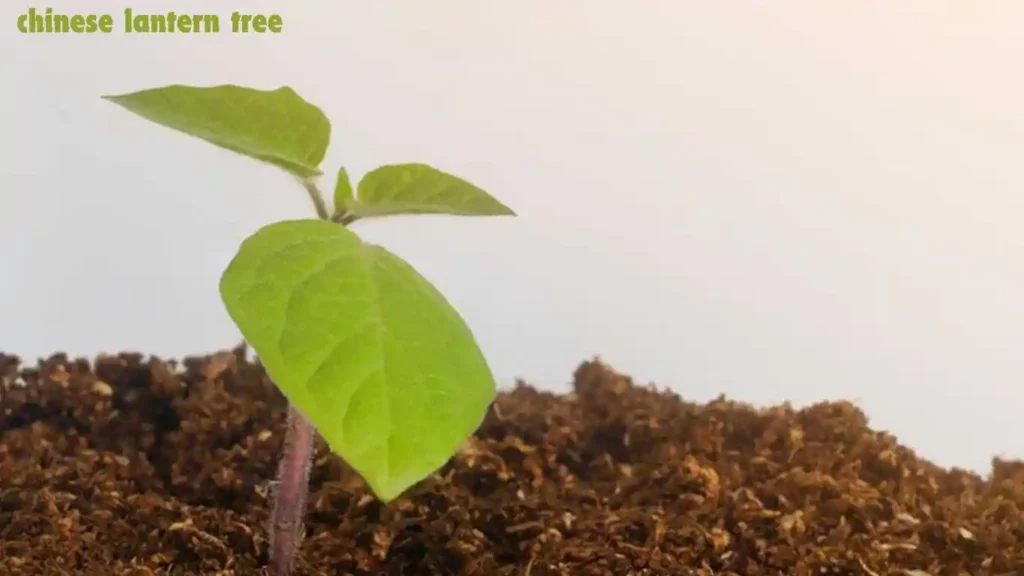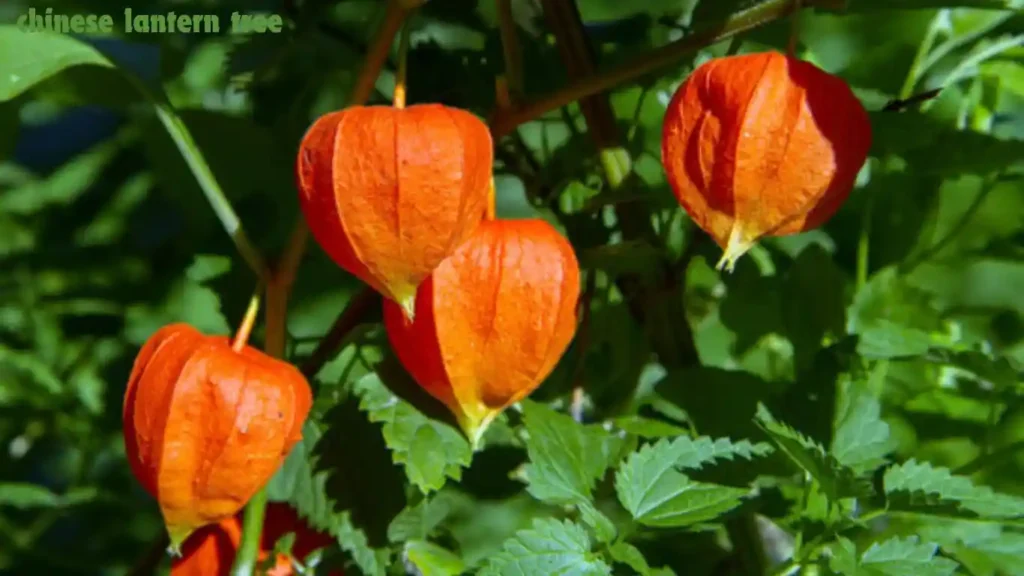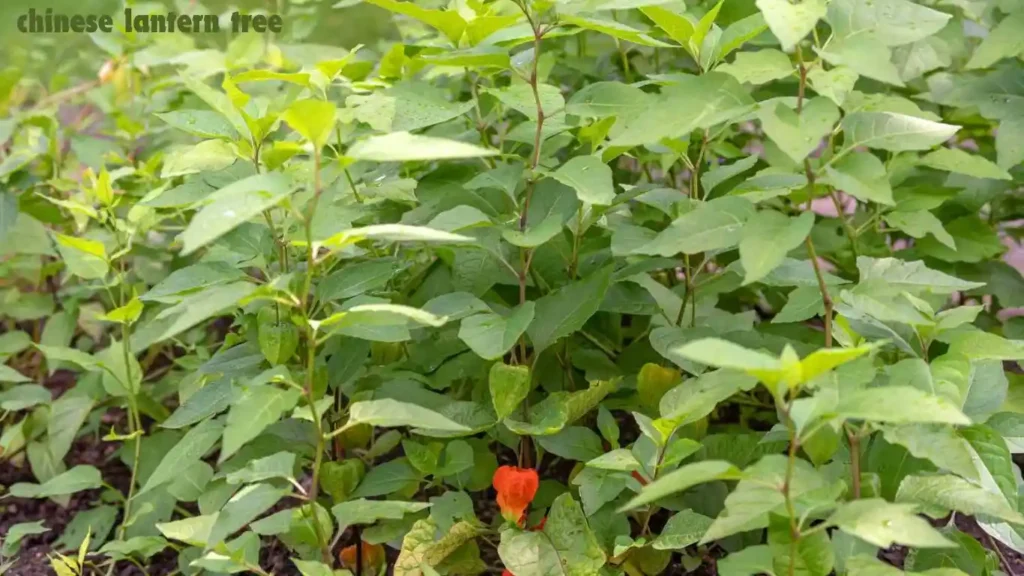How to Grow the Best Chinese Lantern Tree Qualities & Uses
The Chinese Lantern Tree, experimentally known as Crataegus pinnatifida, is a stunning animal type local to China and different parts of Asia.
Also alluded to as the Chinese Haw or the mountain hawthorn, this deciduous tree has a place with the Rosaceae family.
Its name contacts from the attractive impression of its organic product, looking like a traditional Chinese lantern.
Characterized by its staggering production of red lamp-like organic effects, the Chinese Light Tree is a well-known busy plant in nurseries and locations around the world.
Organic Qualities of Chinese Lantern Tree
The Chinese Light Tree ordinarily extends to a level of 6 to 10 meters, with a space of 4 to 6 meters. Its components structure a thick, changed crown embellished with shiny green leaves.
The leaves are profoundly lobed and have jagged edges, adding to the tree’s flowery charm. During spring, the tree flowers with quantities of perfumed white roses, pulling in pollinators like honey bees and butterflies

These flowers give way to the famous light-formed natural effects, which age from green to specific red in pre-fall or late summer. Each natural product covers a small, round seed inside its papery husk.
Authentic Extent
The Chinese Lantern Tree has a rich past going back hundreds of years in Chinese civilization.
In traditional Chinese medicine, different pieces of the tree, including green foods, have been used to treat conditions, for example, acid reflux, hypertension, and cardiovascular problems.
Also, the tree holds expected worth in Chinese fables, frequently handling life span, success, and good luck.
This tree’s social value has risen above the ages, making it a revered image in Chinese craftsmanship, writing, and festivities.
Social Imagery
In Chinese culture, the Chinese Light Tree carries profound suggestive importance. Its light similar to natural products is often related to bliss, best of luck, and blossoming.
During celebrations and festivities, for example, the Chinese New Year, beautiful lights looking like the tree’s organic products are hung to prevent insidious natures and bring blessings for the impending year.
The tree’s connection with life span and the flood has followed a well-known conclusion for setting close to homes and covers.
Conditions and Designing Events
The Chinese Lantern Tree flourishes in different settings, including calm and subtropical wards.
It depends on very much weakened soil and good daylight however can take insufficient shade. This universal tree is solid and strong, prepared for regular dry season and average ice once paid.

It is regularly hunted down in hilly districts, along forest edges, and in developed settings.
Nursery workers and greens keepers frequently combine the Chinese Light Tree into combined lines, hedgerows, and cosmetic nurseries for its unique visual appeal and social significance.
Occasional Differences
The Chinese Lantern Tree goes through occasional changes, each adding to its charm and magnificence over time.
Spring: In spring, the tree bursts into flowers with groups of aromatic white flowers improving its branches. These blooms draw in pollinators and mark the start of the regenerative process.
Summer: As summer passages, the flowers give a method for greening organic products that gradually grow and mature. The vegetation stays rich and green, giving an active scenery to the creation of organic products.
Fall: By pre-fall or late summer, the green effects of the Chinese tree start to grow, turning a magnificent shade of red.
This change adds a spray of type to the scene, strikingly differentiating against the environment of growing vegetation.
Winter: In winter, the tree clears its leaves, exposing its many-sided expanding structure.
Without any hint of foliage, the tree’s light, similar to natural products, persists, giving visible interest and pulling in feral life, such as birds, which provide nutritional seeds.
Arranging and Nursery Uses
The Chinese Light Tree is a loose expansion to any scene, offering cosmetic magnificence and social significance. Here are some well-known finishing and nursery uses:
Standard Tree: Selecting a Chinese Tree as an example tree allows its unique features to become the dominant focal point.
Its unique formation, mainly when considered down with vibrant red organic effects, makes it a point of intersection in the location.
Combined Boundaries: Integrate the Chinese Tree into compound barriers close to other flowering bushes and trees to add fashion and surface all through the seasons.
Hedgerows: Because of its thick growth tendency, the Chinese Lantern Tree can be used to make regular hedgerows or defense screens. The red natural effects add visible interest, while the barbed branches give protection.
Holder Planting: Bantam varieties of the Chinese Tree are just for enclosure growing on porches, galleries, or in little urban spaces.
Their traditional size and dazzling organic effects make them ideal for adding a father of variety to outside living regions.
Help and Maintenance
Keeping a solid and active Chinese Tree requires formal review and reflection. Here are some fundamental upkeep information:
Pruning: Prune the tree in pre-spring or late winter to destroy dead, sick, or crossing stems.
This increases wind current and forestalls the spread of problems and illnesses. Also, specific pruning can help with keeping up with the tree’s shape and size.
Treatment: Apply proper waste in late winter to give fundamental supplements to growth and natural product design.

Refrain from over-treating, as limited supplements can produce lavish vegetation to the harm of organic product design.
Watering: Ensure the Chinese Lantern Tree gets adequate water, particularly during times of dry spells.
Profound, rare watering is sensual over the next shallow watering, as it assigns profound root growth and dry period stability.
Mulching: Apply a layer of natural mulch, for example, crushed bark or fertilizer, around the foundation of the tree to ration water, bury weeds, and further develop soil richness.
Leave a hole between the mulch and the storage room to forestall dampness-related conditions.
Customary and Present-day Applications
The Chinese Light Tree has a large number of conventional and present-day applications, both in social practices and different businesses:
Customary Medication: In conventional Chinese medicine (TCM), different parts of the Chinese Tree, including the products of the soil, are utilized to plan natural solutions.
stomach-related diseases, cardiovascular issues, and respiratory diseases. These cures are accepted to advance general well-being and prosperity.
Culinary Purposes: While not generally consumed because of their severe taste and small size, the products of the Chinese Lantern Tree are sporadically utilized in conventional Chinese cooking.
They can be cooked into jams or sauces, adding a tart flavor and emotional tone to dishes.
Fancy Agriculture: The Chinese Lantern Tree is largely developed for its involvement in greenhouses, parks, and metropolitan scenes.
Its appealing foliage, fragrant blossoms, and vivid natural products go with it a well-known decision for adding visual interest and social importance to outside spaces.
Ecological Impact
The Chinese Lantern Tree presents a few natural gifts, making it a powerful resource in environmental protection efforts:
Untamed life Environment: The tree gives food and haven to different wildlife species, including birds, bugs, and little warm-blooded creatures.
Birds are drawn to the tree’s organic effects, which act as an effective food source, especially throughout the cold temperature months when other food options might be scant.
Also, the thick vegetation and expanding network offer settling areas and security from hunters.
Earth Adjustment: The Chinese Light Tree’s broad underground root growth forestalls soil corrosion and balances out slants, mainly in rough sections where it is much of the time found.
This adds to soil well-being and watershed protection by reducing sedimentation in streams and channels.
Carbon Isolation: Like all trees, the Chinese Tree plays a part in moderating environmental change by absorbing carbon dioxide from the climate through photosynthesis.
The carbon is stored in the tree’s biomass, reducing ozone-harming substances and fighting a worldwide temperature alteration.
Worldwide Dissemination
The Chinese Lantern Tree (Crataegus pinnatifida) is regional to China and different pieces of East Asia, including Japan and Korea.
Notwithstanding, it has been trained in different locations all over the world because of its complicated worth and social importance. Here is an outline of its worldwide transportation:
Asia: The Chinese Lantern Tree is most commonly hunted down in its local space in China, where it happens in mixed territories, including irregular areas, woods boundaries, and developed scenes.
It is additionally local to different pieces of East Asia, like Japan and Korea, where it is known by various names.
North America: The Chinese Lantern Tree has been associated with North America, where it has been developed as a fancy tree in nurseries, parks, and metropolitan scenes.
It is exceptionally well known in calm areas with gentle environments, like the Pacific Northwest and shares of the northeastern US.
Europe: In Europe, the Chinese Light Tree is designed as a flowery plant in gardens and greenhouses.
Conclusion
All in all, the Chinese Light Tree (Crataegus pinnatifida) is a unique animal type with a rich history, social importance, and natural significance.
From its breathtaking showcase of lamp-like organic effects to its medicinal properties and ecological advantages, this tree typifies the friendly relationship between people and nature.
As an image of life span, flourishing, and good luck in Chinese culture, the Chinese Light Tree holds a unique location in the hearts of people all over the world.
Its elaborate magnificence, combined with its functional purposes in customary medication and biological protection, make it a significant resource in greenhouses, scenes, and normal environments.
By getting it and loving the looks and utility of the Chinese Lantern Tree, we can enable more significant preference for the normal world and work together to observe and protect this infamous species for people in the future to appreciate.
FAQS
What is the lantern plant called?
Physalis alkekengi, generally called Chinese lantern, is a herbaceous perennial of the nightshade family that succeeds in an erect clump to 24” tall and as expansive.
What is the Chinese lantern plant used for?
In classic Chinese and Unani drugs, Chinese Lantern berries were used in ancient times as diuretics and were believed to contain anti-inflammatory properties.
Are Chinese lanterns religious?
In Buddhist practice, followers consider the golden and benevolent aura of the Buddha, as indicated by lanterns, can dispel inner night. Still, other celebrations derived from the birthday celebrations of Tianguan, the Taoist god of good luck.
What is the name of the fruit in the Chinese lantern?
Physalis (Bladder Cherry, Cape Gooseberry, Chinese Lantern, Ground Cherry, Jerusalem Cherry, Strawberry Tomato) | North Carolina Extension Gardener Plant Toolb.
What type of flower is a Chinese lantern?
The scientific name for physalis is Physalis peruviana, but you may hear it called by another term: Aztec Berry. Cape gooseberry. Chinese lantern.
What type of flower is a Chinese lantern?
This species of physalis is native to Asia and is renowned for its vibrant, papery flowers that resemble the colorful paper lanterns of the region.
Also Read

I am genuinely thankful to the owner of this web sijte who has shared this wonderful post aat at
this place. https://odessaforum.biz.ua/
I am genuinely thankful to the owner of this wweb site who has shared this wonderful ppst at at this place. https://odessaforum.biz.ua/